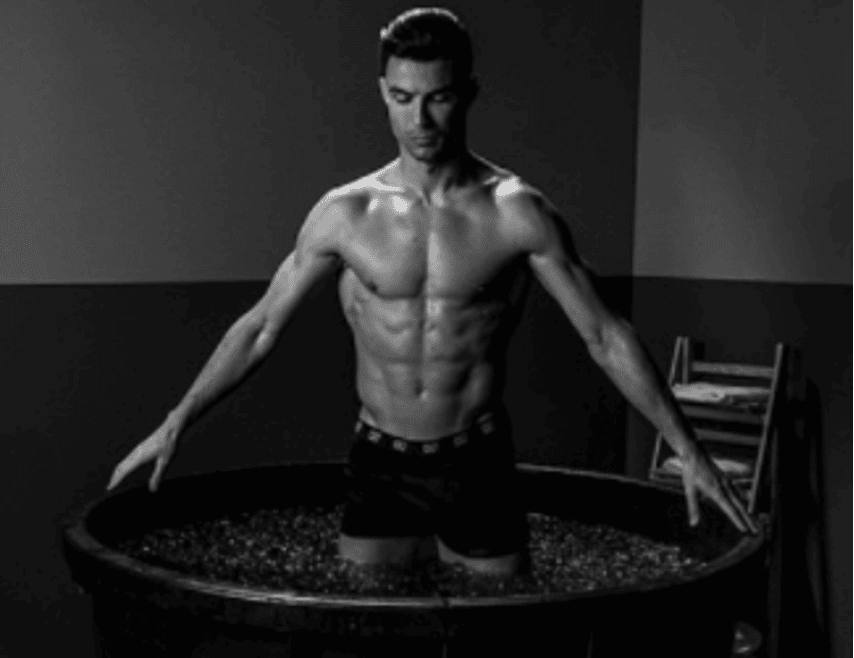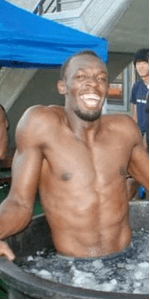20 de July de 2021
Why Do Athletes Take Ice Baths ? Professional Coach’s Response
In recent years, we have been able to see how sports are affected by outdated fashion. Sometimes certain training trends become popular but will be forgotten after a few months, while others continue over time. In recent years, trends such as CrossFit, Aerobics/ Calisthenics, or high intensity interval training have become more prominent, and many people are hooked by this type of training. On the other hand, post-exercise recovery is also affected by these trends. Currently, there are new trends surrounding the recovery of athletes, such as using foam rollers, using suction cups (cupping) or immersing in ice baths (cryotherapy). All of these seek to improve the performance of the athlete, shorten his recovery time and help better physical development. However, many times this methodology is not supported by science, but is regarded as a successful case study. That is, when a person reports a significant improvement after applying any type of technique, the technique is considered good. However, this need not be the case. What works for one person does not mean that it works for the entire population. In this sense, in today’s post, we will focus on the trend set by using ice baths after strenuous exercise to reduce muscle fatigue and improve recovery.
Currently, many celebrities have demonstrated this technique after sports events. For example, in Figures 1 and 2, we have Cristiano Ronaldo and Usain Bolt soaked in a cold bath to “facilitate” recovery. But what scientific evidence is hidden behind this peculiar activity?

Image 1: Cristiano Ronaldo applying an ice baths. Source: Men’s Health

Image 2: Usain Bolt applying an ice baths.
First, we must analyze the possible positive and negative effects of using this “therapy“. It should be pointed out that cryotherapy has been positioned as a key strategy for athletes’ rehabilitation (1). Obviously, it can reduce fatigue after training and the game itself, and promote better performance (2). In theory, these dives can reduce post-exercise “pain” because they slow down nerve signaling in the affected muscles and also seem to reduce the production of free radicals in the affected area (3).
When the target limb is immersed in water, the cold causes vasoconstriction to occur(4), that is, a decrease in blood supply due to a decrease in the diameter of an artery (5). When the cold-water bath is stopped, the body will pump a large amount of blood to the affected area to restore it to its original temperature. This “rebound” effect causes a large amount of blood to flow to the affected limb, thereby increasing the amount of nutrients that reach the area (6).
A systematic review of meta-analysis analyzed a total of 36 studies, comparing the use of ice baths with the purpose of passive recovery (3). To this end, they analyzed studies with muscle fatigue variables, such as subjective soreness (DOMS), the RPE scale, and markers such as CK protein and lactate. The results of this meta-analysis are clear; the cold bath helps reduce DOMS and RPE compared to no application. In contrast, they did not observe significant changes in the levels of lactate and CK protein. This may indicate that the person’s subjective sensation may be very good, but the signs of muscle damage have not really improved significantly.
This review pointed out as an important limitation the great variety of selected studies and the little similarity between them in terms of cryotherapy interventions. This is why we think it is appropriate to analyze some research in depth.
Research
First, we will approach the study of Tucker et al. (2012) They analyzed the effects of cold through muscle biopsy. In this case, the cold compress is applied locally and after several exercises on a bicycle (7) It should be noted that the procedure they followed has both pros and cons in terms of methodology. In their case, they did not use a water tank to introduce the affected limb, but simulated immersion through an ice pack. On the contrary, the objective analysis protocol was by means of muscle biopsy, so the quality of this measure is highly reliable. In addition, they must compare the application of cryotherapy and passive recovery by applying cold therapy on one limb while leaving the other limb in a passive recovery state.
In this study, it seems obvious that the lactic acid level after the cold compress (4 hours later) decreases more than after passive recovery. On the other hand, the glycogen resistance is much faster. These data are favor the use of cryotherapy both for the subjective perception of recovery and for recovery at the molecular level (7).
In another very interesting study, they analyzed the effects of passive recovery, low intensity active recovery, electrostimulation recovery, and cryotherapy recovery. In this case, the sample is a semi-professional climber who performed two tests with a recovery interval of 20 minutes. In this case, “recovery” is completely acute because it does not last more than 20 minutes. The orientation of this research is self-performance after a period of rest. What did they see? It seems that cryotherapy and active recovery are both useful tools to improve performance. In this case, they also analyzed blood lactate equivalents and found that cold application reduced blood lactate levels, while electrostimulation and passive recovery did not (8).
On the contrary, there are other studies that have not seen any effect of immersion in cold baths on blood lactate both at the acute level and on recovery after one day. For example, this is the case in the study of De Pauw et al. He did not find a significant difference in blood lactic acid levels after applying passive recovery, active recovery, and ice bath recovery (9). However, they did see that cold water baths might be a good strategy to reduce fatigue and increase intensity during the next exercise.
As we have seen, there are discrepancies between the use of ice baths with the aim of reducing fatigue or improving recovery. We cannot argue that there seems to be a certain benefit when we apply cryotherapy either subjectively in the perception of the person who receives it or objectively when we evaluate parameters such as blood lactate or performance. However, we have not detailed which is the most effective strategy. In this sense, all the studies apply different protocols in terms of time, temperature and form of application.
In order to give a general recommendation, we will look at the meta-analysis I have previously reviewed by Hohenauer and collaborators, but always keep in mind that each case is different (3). The recommendation that seems to be useful for muscle recovery is to take an average of 13 minutes in a cold-water bath at 10ºC, although a cold-water bath at 10ºC may vary between 10 and 24 minutes. This immersion of affected muscles seems to be effective in reducing DOMS sensation in trained individuals and promoting RPE. To mesure training sessions you can use a Vitruve device. However, a reference protocol has yet to be established in order to know objectively whether this dive strongly supports faster recovery or better “performance.”
References
- Bleakley C, McDonough S, Gardner E, Baxter GD, Hopkins JT, Davison GW. Cold‐water immersion (cryotherapy) for preventing and treating muscle soreness after exercise. Cochrane Database of Systematic Reviews. 2012(2).
- Costello JT, Algar LA, Donnelly AE. Effects of whole‐body cryotherapy (− 110 C) on proprioception and indices of muscle damage. Scandinavian journal of medicine & science in sports. 2012;22(2):190-8.
- Hohenauer E, Taeymans J, Baeyens J-P, Clarys P, Clijsen R. The effect of post-exercise cryotherapy on recovery characteristics: a systematic review and meta-analysis. PloS one. 2015;10(9):e0139028.
- Cheng C, Matsukawa T, Sessler DI, Makoto O, Kurz A, Merrifield B, et al. Increasing mean skin temperature linearly reduces the core-temperature thresholds for vasoconstriction and shivering in humans. The Journal of the American Society of Anesthesiologists. 1995;82(5):1160-8.
- Tansey EA, Johnson CD. Recent advances in thermoregulation. Advances in physiology education. 2015.
- Ansar W, Ghosh S. Inflammation and inflammatory diseases, markers, and mediators: Role of CRP in some inflammatory diseases. Biology of C Reactive Protein in Health and Disease: Springer; 2016. p. 67-107.
- Tucker T, Slivka D, Cuddy J, Hailes W, Ruby B. Effect of local cold application on glycogen recovery. The Journal of sports medicine and physical fitness. 2012;52(2):158-64.
- Heyman E, De Geus B, Mertens I, Meeusen R. Effects of four recovery methods on repeated maximal rock climbing performance. Medicine & Science in Sports & Exercise. 2009;41(6):1303-10.
- De Pauw K, Roelands B, Vanparijs J, Meeusen R. Effect of recovery interventions on cycling performance and pacing strategy in the heat. International journal of sports physiology and performance. 2014;9(2):240-8.

